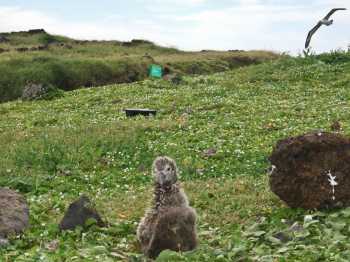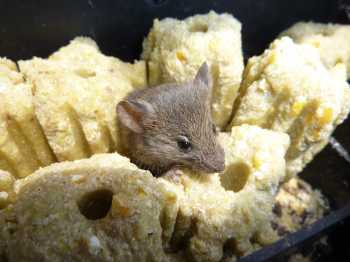The Hawaii Department of Land and Natural Resources (DLNR) completed construction of the first predator-proof fence in the Hawaiian Islands, and the United States, at the Ka‘ena Point Natural Area Reserve on Oahu in March of this year (click here).
Spanning nearly 700 m in length and going across a coastal peninsula, it provides 20 ha of safe habitat for numerous seabirds, including several hundred breeding Laysan Albatrosses Phoebastria immutabilis and thousands of Wedge-tailed Shearwaters Puffinus pacificus, as well as for 11 endangered plant species.
Domestic dogs, feral cats, Indian Mongooses Herpestes javanicus, rats and mice were found within the reserve prior to completion of the fence despite intensive predator control and posed a significant threat to all native species in the reserve.
Evaluation of rat and mouse populations over two years, including documenting the species present, seasonal population changes, home range sizes and density, informed predator removal efforts that began upon fence completion. The two rodent species present in the reserve are Black Rats Rattus rattus and House Mice Mus musculus, with mice occurring at densities of up to four times that of rats.
Diphacinone was chosen as it is currently the only legally available toxicant in Hawaii and has been placed in bait boxes spaced 25 m apart per pesticide label guidelines. Because the home range of resident mice was determined to be approximately 15 m, and with uncertainty over the effectiveness of diphacinone in removing mice, multiple-catch mouse traps have also been placed every 12.5 m to augment baiting.


Cats and mongooses were removed in relatively short order with a combination of cage trapping and padded legholds and all the dogs present were scared out during the construction process. Based on multiple indices of abundance, the mice and rat populations within the reserve are down to the last 0.5%. The project anticipates a successful outcome with rat removal, but is still with-holding judgment on whether mice will be able to be removed.
Nonetheless, predator exclusion and removal are anticipated to result in an increase in the existing population of breeding seabirds, encourage new seabird species to nest and enhance regeneration and recruitment of native plants and invertebrates at Ka`ena Point.
For more information visit the Ka'ena Point Ecosystem Restoration Project.
Lindsay Young, ACAP North Pacific News Correspondent, 22 May 2011

 English
English  Français
Français  Español
Español